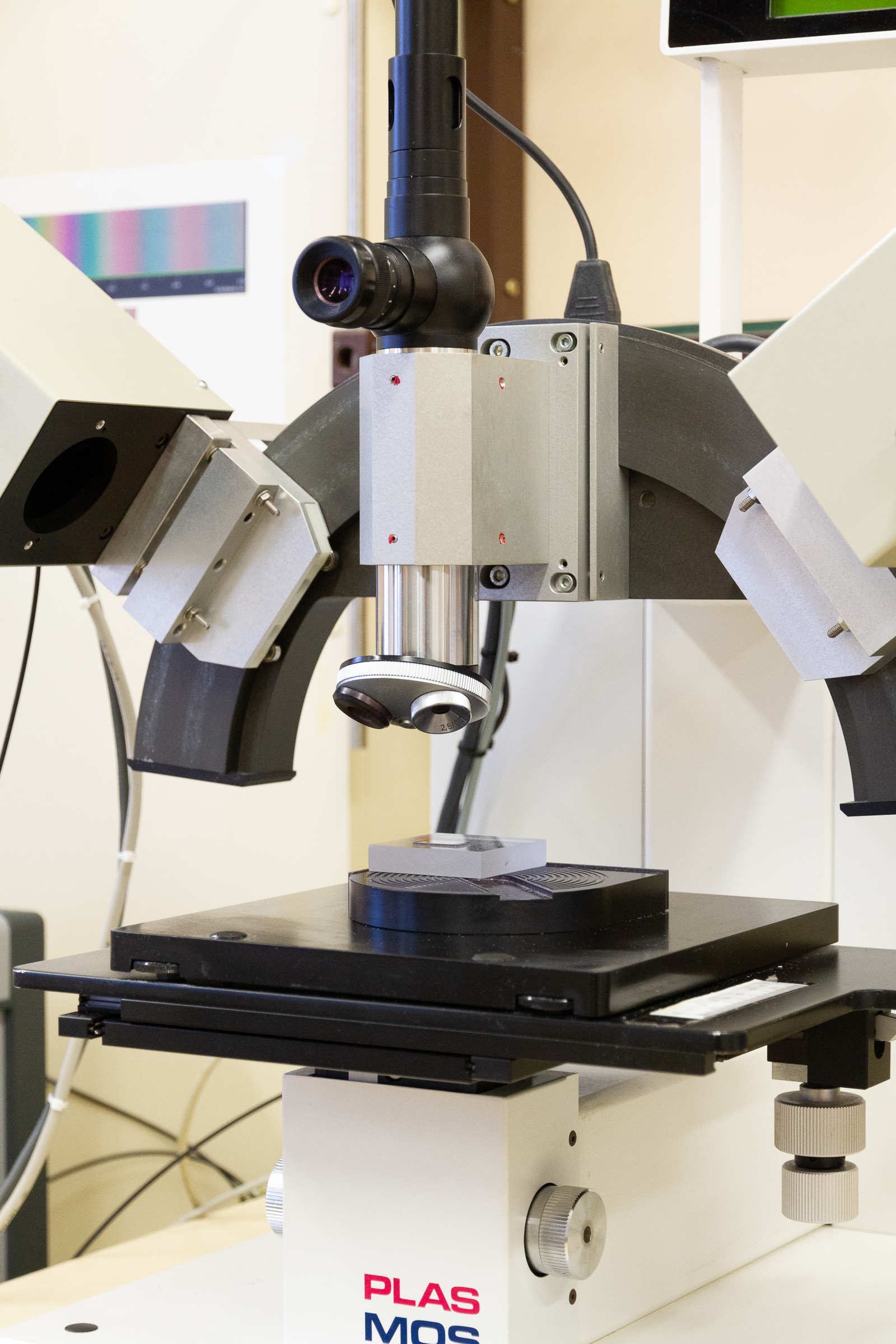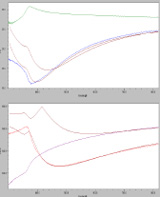Spectroscopic and imaging ellipsometry
Spectroscopic ellipsometry
Spectroscopic ellipsometry is an optical examination method for measuring the optical indices n and k and the thickness of thin films, e.g. oxide films or polymer films. The measurement range extends from a few tenths to several hundred nanometers of layer thickness. Furthermore, adsorption processes on surfaces with a detection limit of a tenth of a monolayer can be monitored with time resolution (in situ). A major advantage of this method compared to monochromatic ellipsometry is that the values can be determined unambiguously without angle-resolved measurements, even at higher layer thicknesses.
Measuring principle
Linearly polarized light is focused onto the sample surface at a relatively large angle of incidence. The reflected light is generally elliptically polarized. Depending on the wavelength of the incident light, the polarization state of the reflected light, which is characterized by the direction and ratio of the optical principal axes, and the absolute value of the amplitude are measured. From this, it is possible to calculate the refractive index and absorption coefficients of thin films as well as the film thickness. Multilayer coating systems can be modeled under certain assumptions.
A particular advantage of this method is that it is possible to measure the film thickness while the film is still forming, without disturbing the reaction process. This method is used, for example, to monitor protein adsorption on surfaces or the formation of self-assembled monolayers.
Requirements for test material
Reflective (smooth) surface of size at least approx. 3 mm x 5 mm.
Measuring equipment/measuring possibilities
Spectroscopic in situ ellipsometer (SE801 from Sentech):
- Spectral measuring range from 280 nm - 850 nm (stabilized Xe lamp for UV/VIS)
- Measuring range layer thickness: approx. 0.1 - 1000 nm
- Measuring spot on sample approx. 1 mm x 3 mm
- Extinction ratio 10-6
- Adjustable angle of incidence
- Automated measurements, e.g. for process kinetics
- Powerful evaluation software
- Measurements in liquids, vacuum and various gas atmospheres (also during plasma processes) possible
Imaging ellipsometry
Imaging ellipsometry is an examination method for characterizing thin films. Thin films can be examined for their optical properties on polished surfaces. Structured surfaces can be characterized with little effort. Additionally, local evaluation of special features on the surface is possible.
The ellipsometer has both a 633 nm laser and the ability to irradiate samples in a wide range of wavelengths. The evaluation occurs via null ellipsometry. In this method, a roating polarizer evaluates the polarization direction changed by the sample. The optical properties of the investigated sample are determined from the measured values via an optical model of the layer system.
A fully automated double-arm goniometer makes it possible to measure effectively at different angles of incidence. From this, other properties of the sample such as the Brewster angle can be determined, which simplifies measurement on different substrates. Additionally, via the angle adjustment, higher accuracies can be achieved for layers with thicknesses already below one nanometer.
Measuring apparatus
Imaging ellipsometer type nanofilm EP4 from Accurion.
 Fraunhofer Institute for Interfacial Engineering and Biotechnology IGB
Fraunhofer Institute for Interfacial Engineering and Biotechnology IGB


